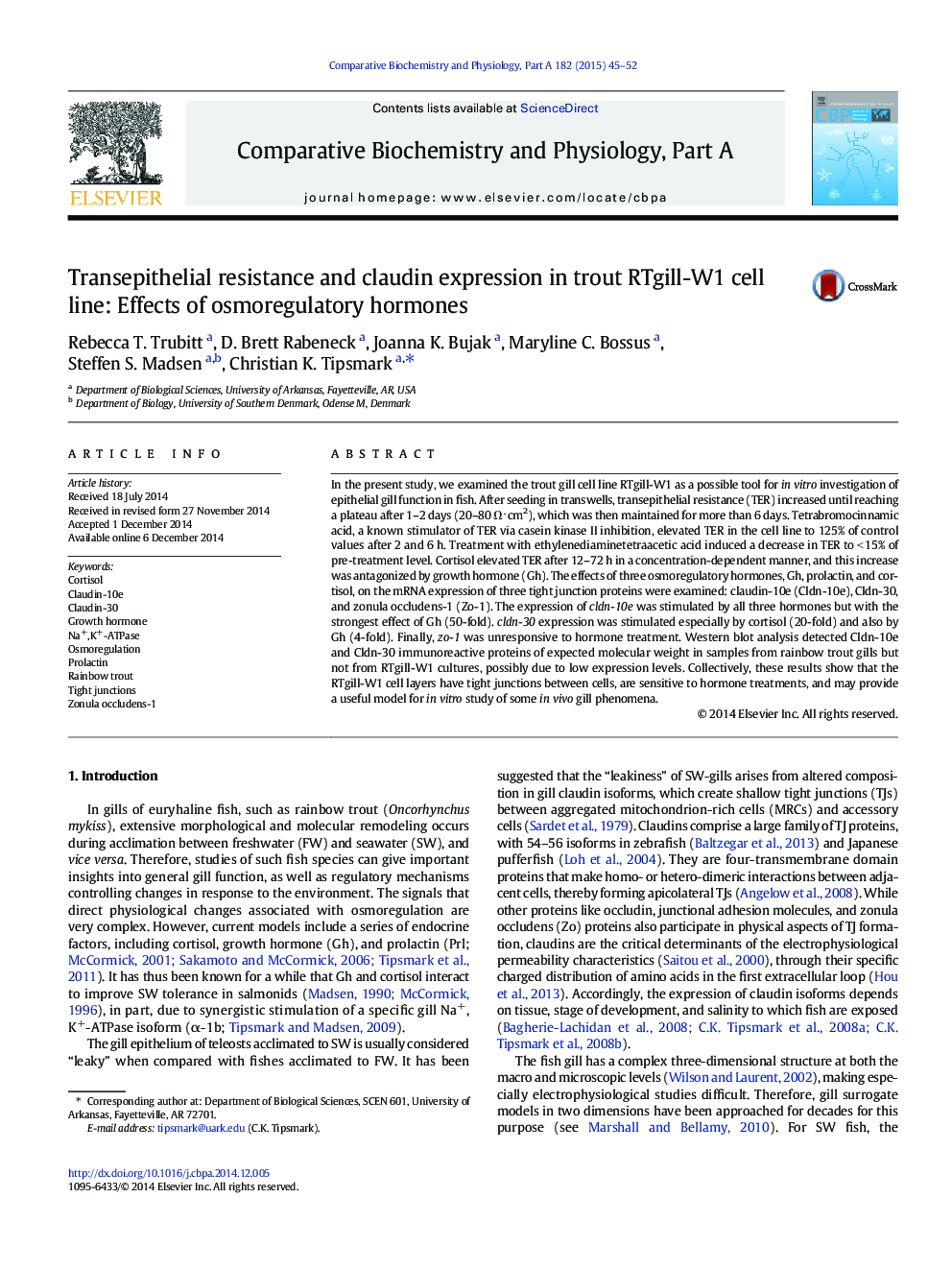| Article ID | Journal | Published Year | Pages | File Type |
|---|---|---|---|---|
| 1972082 | Comparative Biochemistry and Physiology Part A: Molecular & Integrative Physiology | 2015 | 8 Pages |
In the present study, we examined the trout gill cell line RTgill-W1 as a possible tool for in vitro investigation of epithelial gill function in fish. After seeding in transwells, transepithelial resistance (TER) increased until reaching a plateau after 1–2 days (20–80 Ω⋅cm2), which was then maintained for more than 6 days. Tetrabromocinnamic acid, a known stimulator of TER via casein kinase II inhibition, elevated TER in the cell line to 125% of control values after 2 and 6 h. Treatment with ethylenediaminetetraacetic acid induced a decrease in TER to < 15% of pre-treatment level. Cortisol elevated TER after 12–72 h in a concentration-dependent manner, and this increase was antagonized by growth hormone (Gh). The effects of three osmoregulatory hormones, Gh, prolactin, and cortisol, on the mRNA expression of three tight junction proteins were examined: claudin-10e (Cldn-10e), Cldn-30, and zonula occludens-1 (Zo-1). The expression of cldn-10e was stimulated by all three hormones but with the strongest effect of Gh (50-fold). cldn-30 expression was stimulated especially by cortisol (20-fold) and also by Gh (4-fold). Finally, zo-1 was unresponsive to hormone treatment. Western blot analysis detected Cldn-10e and Cldn-30 immunoreactive proteins of expected molecular weight in samples from rainbow trout gills but not from RTgill-W1 cultures, possibly due to low expression levels. Collectively, these results show that the RTgill-W1 cell layers have tight junctions between cells, are sensitive to hormone treatments, and may provide a useful model for in vitro study of some in vivo gill phenomena.
